Botany - 2f: Movement of Water & Solutes
1/31
There's no tags or description
Looks like no tags are added yet.
Name | Mastery | Learn | Test | Matching | Spaced |
|---|
No study sessions yet.
32 Terms
transpiration stream
the movement of water through a plant from the roots to stems to leaves, where it is lost by evaporation
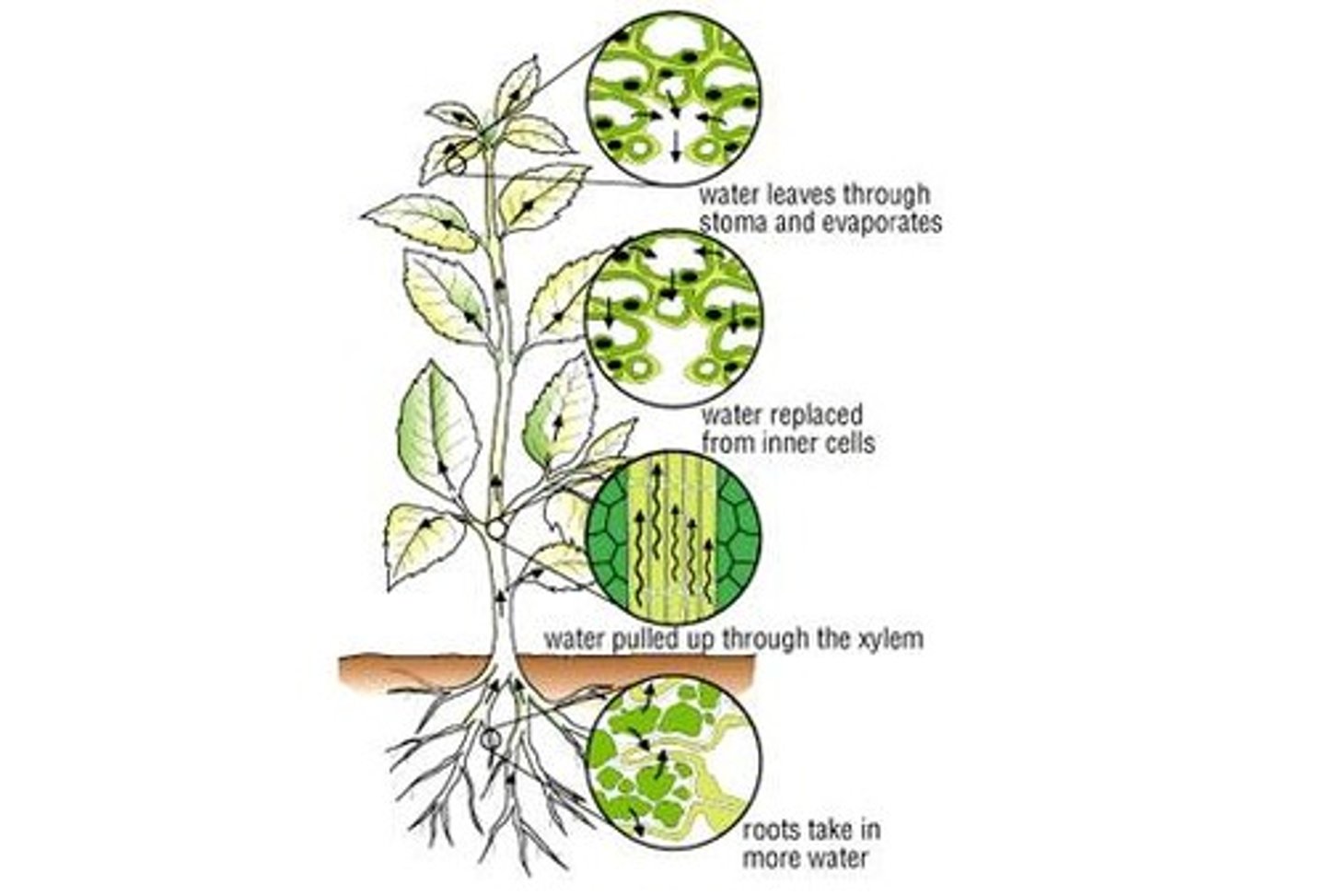
assimilate stream
the flow of sucrose/carbs. produced by a plant during photosynthesis within the phloem
- translocation of photosynthate from source (photosynthesis-usually leaf) to sink (storage- usually stem or root)
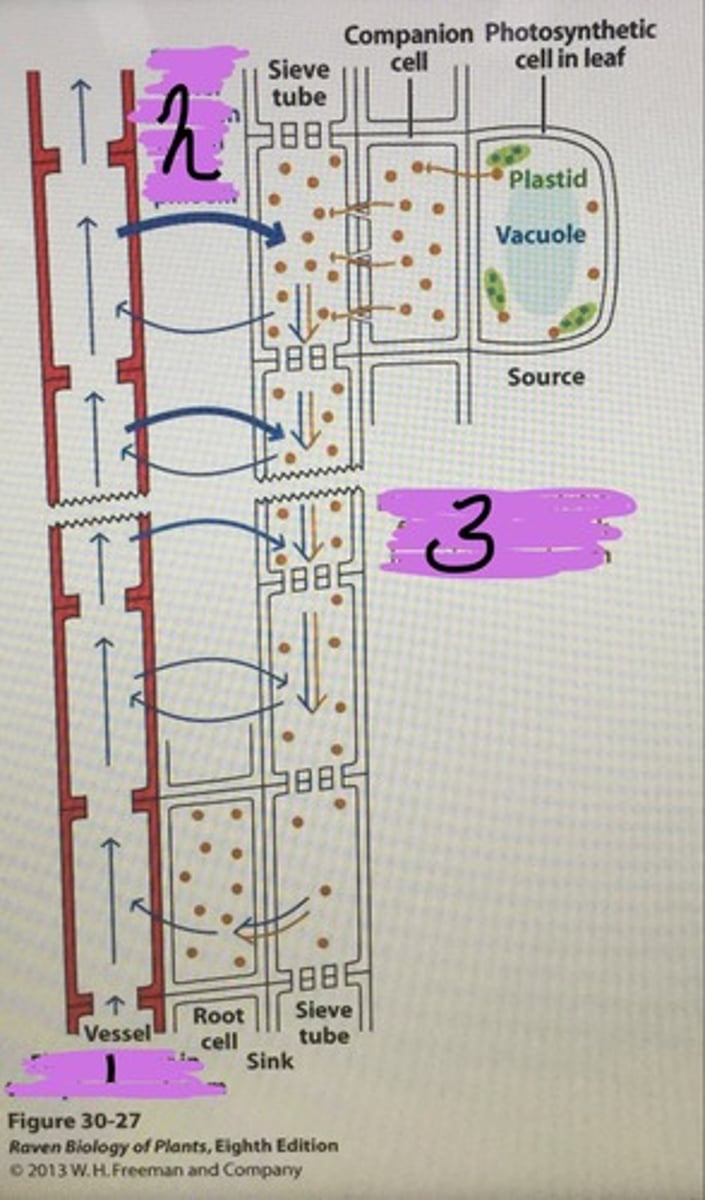
radioactive tracer study
evidence for stream separation
transpiration stream pathway
a) Apoplastic - water
b) Symplastic - water and minerals
c) Transcellular - water
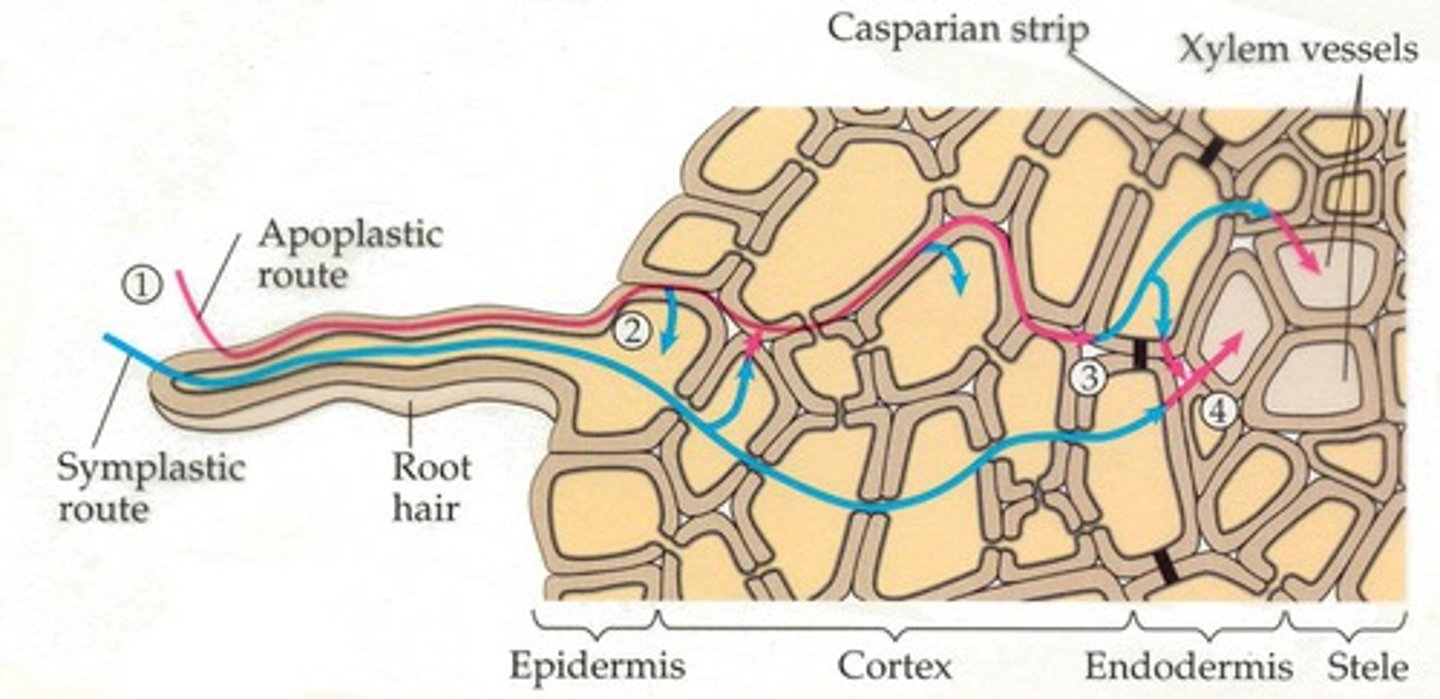
stomata
regulate transpiration
- guard cells regulate stomata
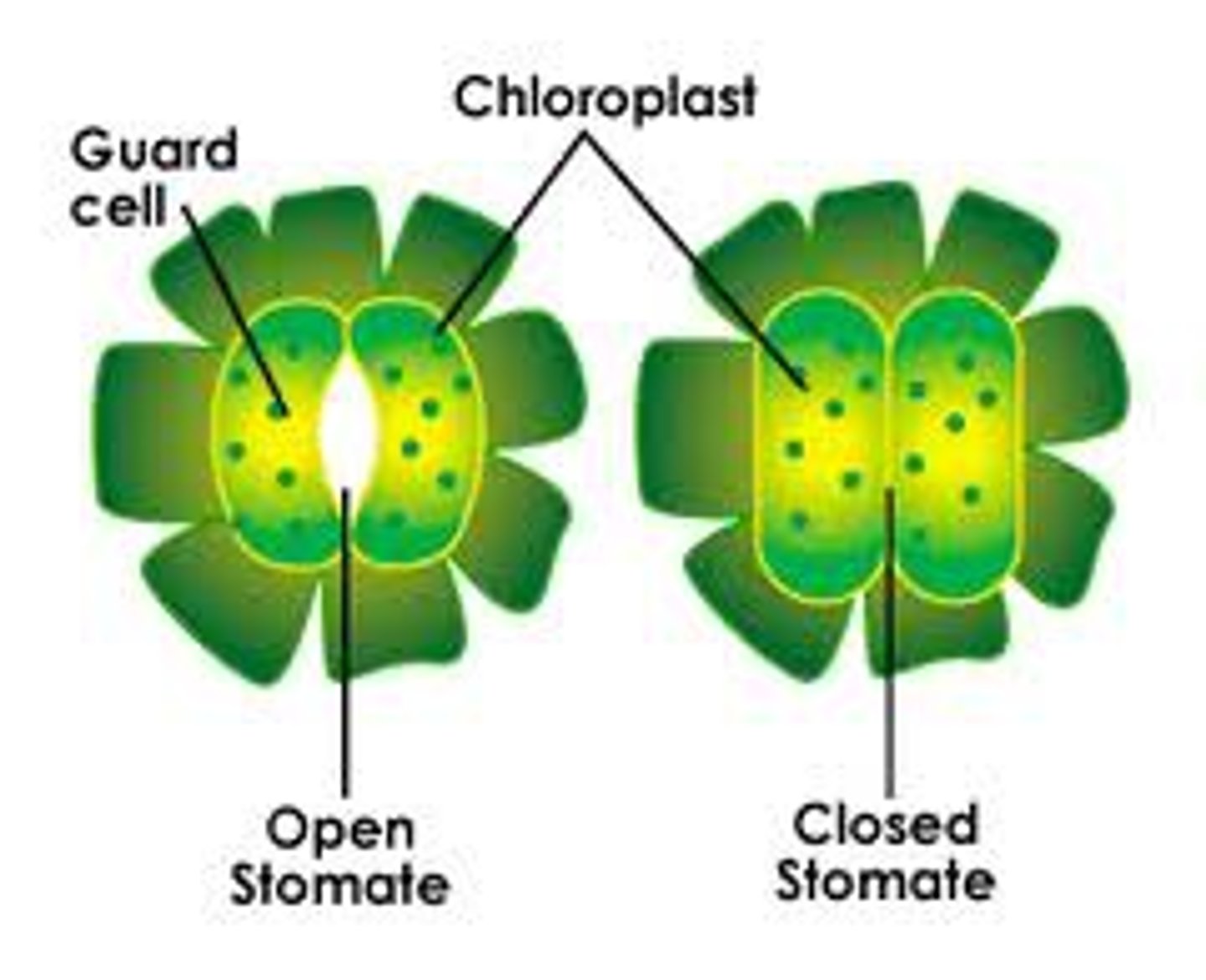
what regulates the transpiration stream?
stomata
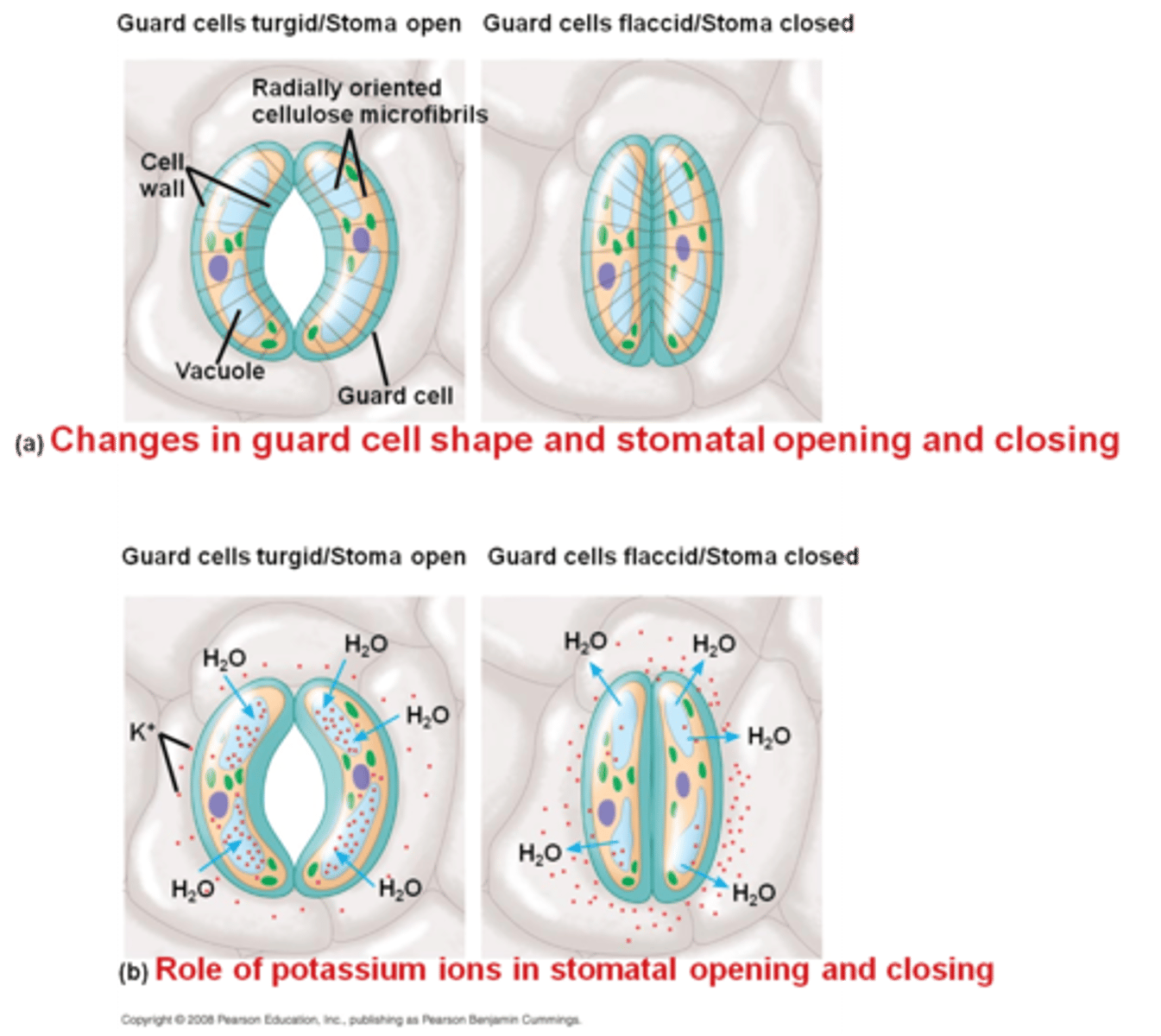
what regulates stomata?
guard cells
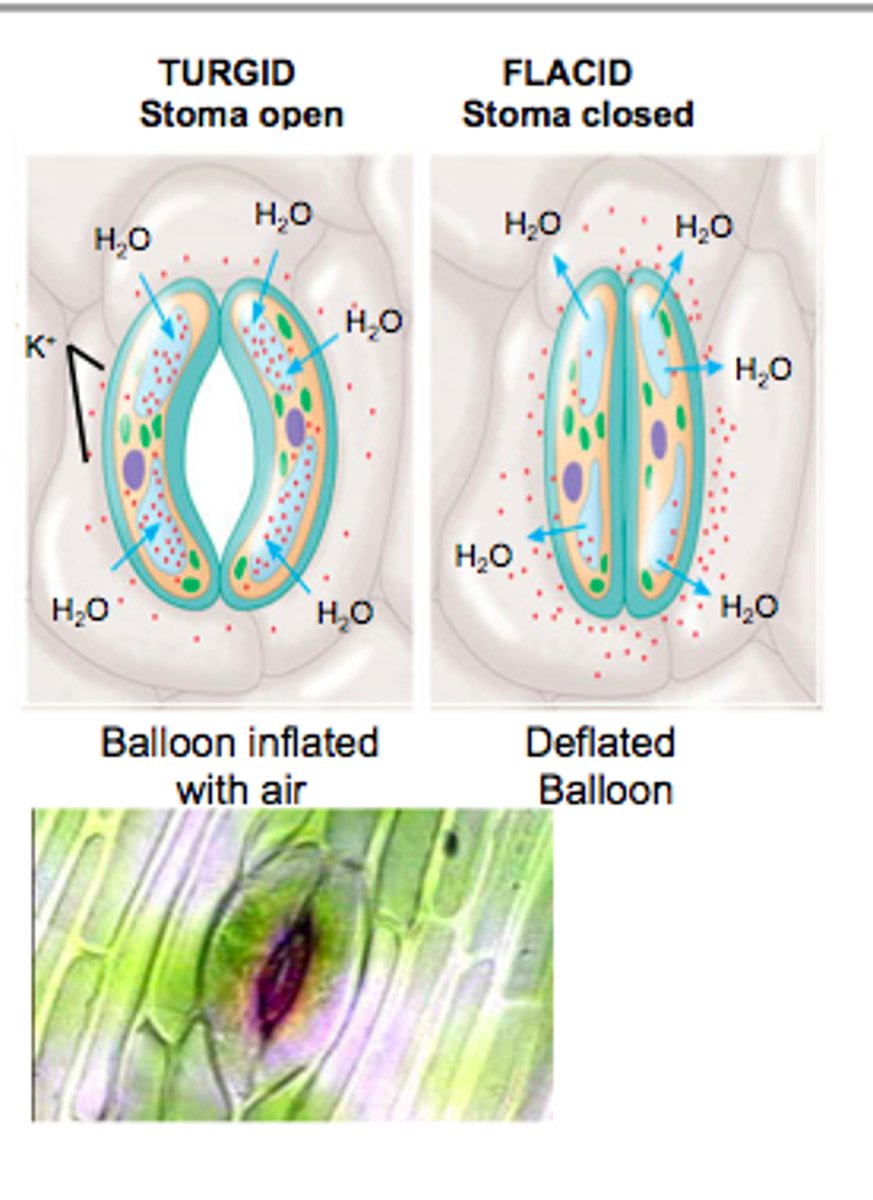
turgid guard cells
stoma open
- active transport K+ (pr sucrose)
- malate 2- and Cl- and K+ flowing in to guard cell
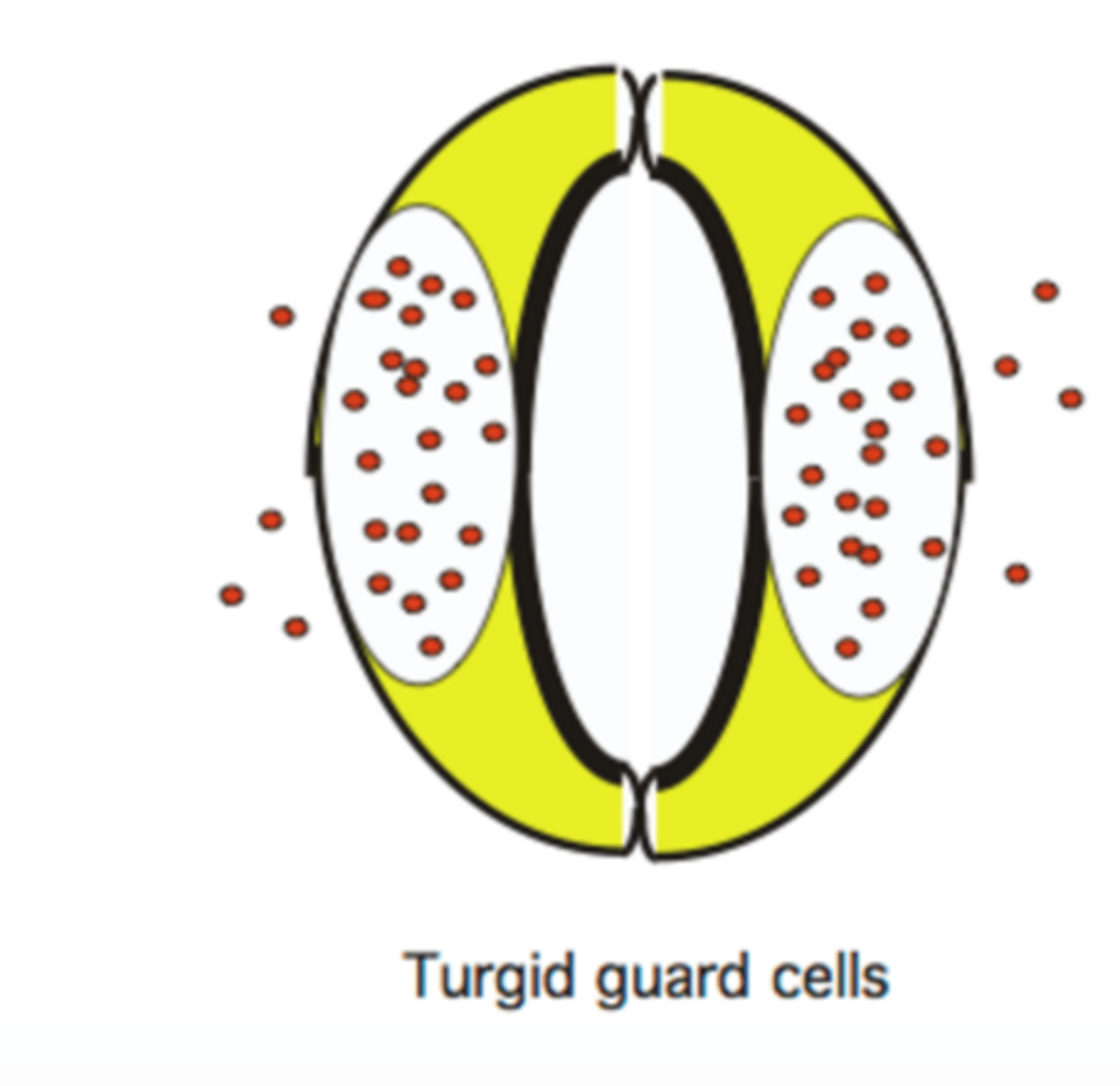
ABA
abscisic acid (plant hormone)
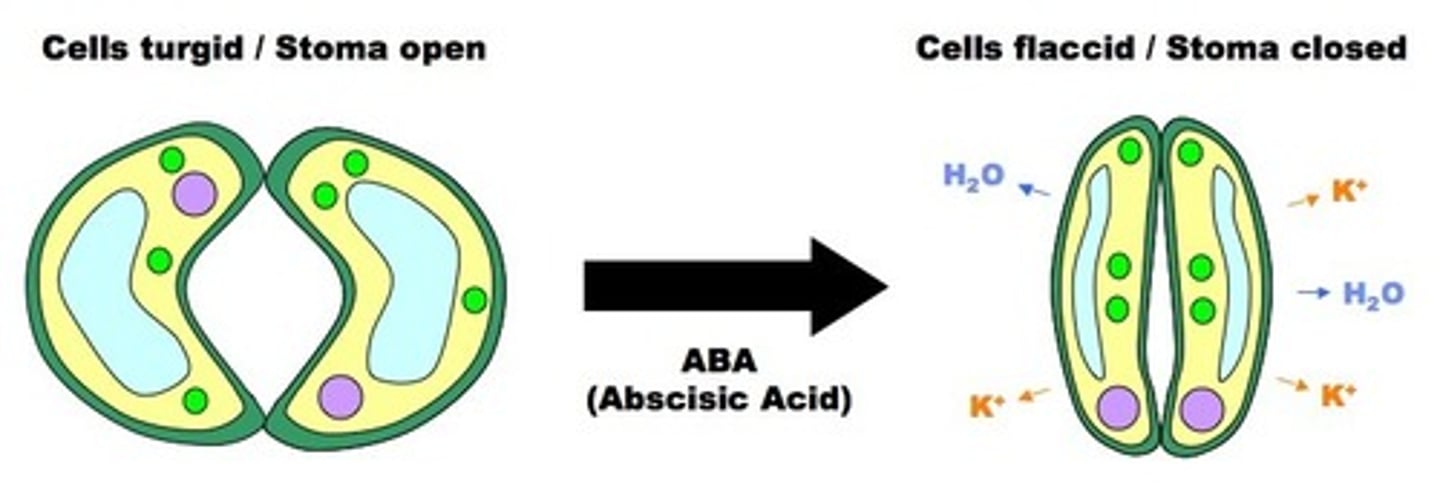
flaccid guard cells
stoma closed
- K+ (or sucrose), Cl-, and malate 2- flow out of guard cell
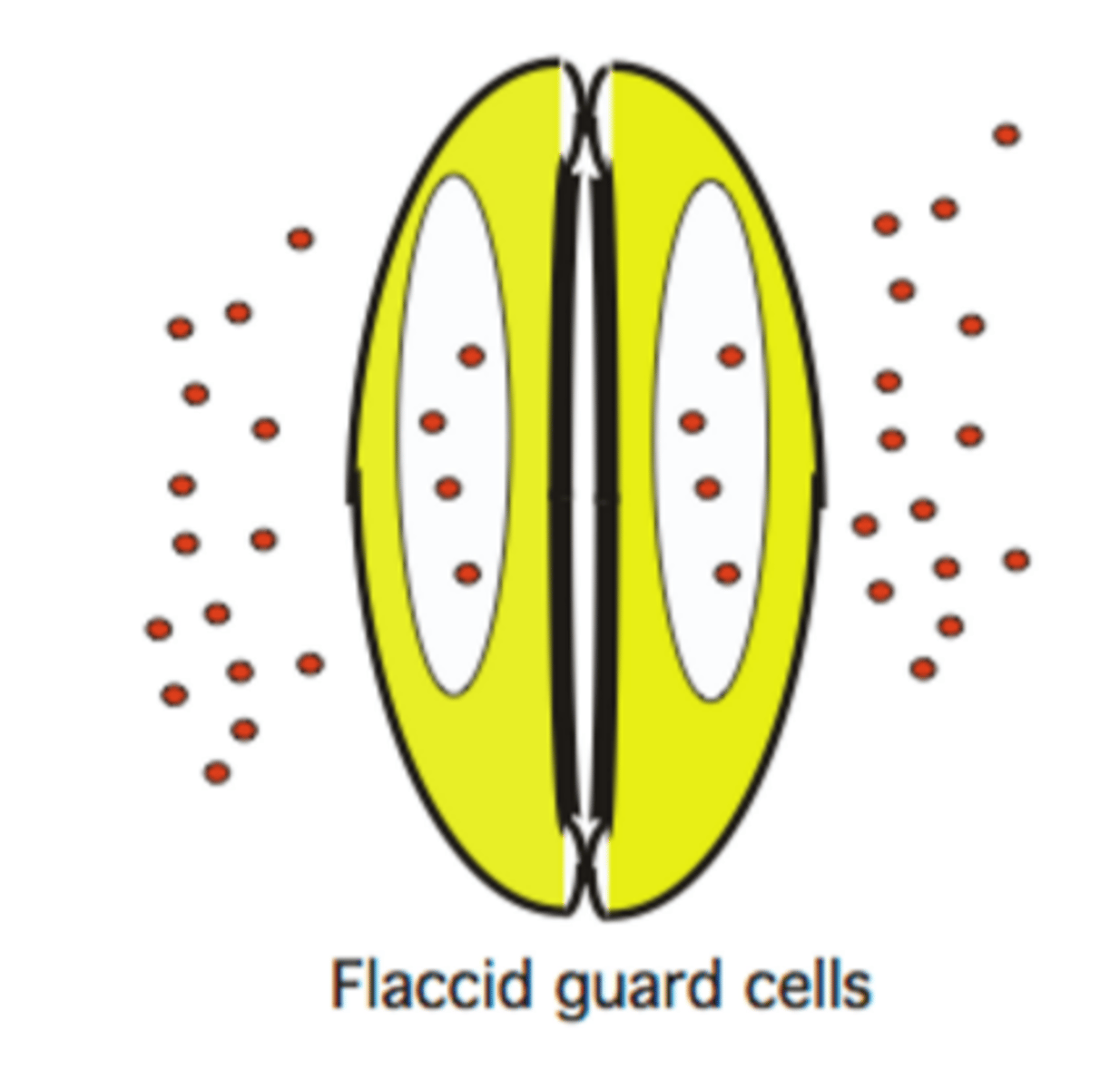
stomal aperature
highest (≈ 23 µm) between 1:00 and 3:00 pm at ≈ 23 µm
- lowest (≈ 8-9 µm around 8:00 am and 10-11:00 pm)
K+ content
highest around 10:00 am at ≈ 41% area
- lowest (≈ 4% area) around 9:00 pm
sucrose content
highest around 4:00 pm at ≈ 1.75 pmol/guard cell pair
- lowest (≈ 0.5 pmol/guard cell pair) around 8:00 am
what factors regulate guard cells and transpiration?
environmental factors
- water
- light
- [CO2] in leaf
- temperature
how water regulates guard cells & transpiration
if abundant --> stomata open
if scarce --> stomata closed
how light regulates guard cells & transpiration
daytime --> stomata open
nighttime --> stomata closed
how [CO2] in leaf regulates guard cells & transpiration
lower concentration --> stomata open
higher [ ] --> stomata closed
how temperature regulates guard cells & transpiration
lower --> stomata open
higher --> stomata closed
why do guard cells have chloroplasts?
to create ATP from light for active transport
water scarcity leads to
ABA (abscisic acid) - opens leak channel
what inhibits the K+ pump?
CO2
higher temperature leads to...
more water loss --> ABA (abscisic acid)
more CO2 from respiration
mechanisms for movement in transpiration stream
push and pull
push mechanism for movement in transpiration
root pressure (osmotic pressure)
- ion active transport into xylem
- water potential now greater in nearby cells
- water flows into xylem generating pressure
- guttation: safety valve to protect leaf from too much water pressure from roots
- problems...
problems of push mechanism for movement (transpiration)
1. no root pressure in many plants
2. tallest trees over 350 ft; root pressure only good up to 100-170 ft
3. water still moves up a severed stem with leaves (so no roots)
pull mechanism for movement in transpiration
due to transpiration or water use by the leaves
- water pulled into root because of H+ bonding
- cohesion-tension
- cohesion-adhesion-tension theory
- problems....
guttation
Due to root pressure, droplets of water appear in the morning on the leaf tips of some herbaceous plants (different from dew)
- safety valve to protect leave from too much water pressure from roots
problems of pull mechanism for movement (transpiration)
- cavitation and embolism in a vessel (formation of empty space filled with water vapor)
- drought conditions --> high vulnerability
- theoretical max tree ≈ 425 ft
assimilate stream pathway =
translocation
- pathway = source to sink
assimilate stream movement mechanisms
the cells are alive
- early work- diffusion and cytoplasmic streaming
- Aphid research with isotopes like 14C showed phloem sap is under pressure and so diffusion is too slow
- pressure-flow hypothesis/theory: osmotic pressure drives translocation and the movement of sucrose is passive
pressure-flow hypothesis
hypothesis that explains the method by which phloem sap is transported through the plant from a sugar "source" to a sugar "sink"
- osmotic pressure drives translocation
- movement of sucrose is passive
problem of assimilate stream- translocation
rupture or penetration of a sieve tube
- solution: P-protein and callose (a polysaccharide)